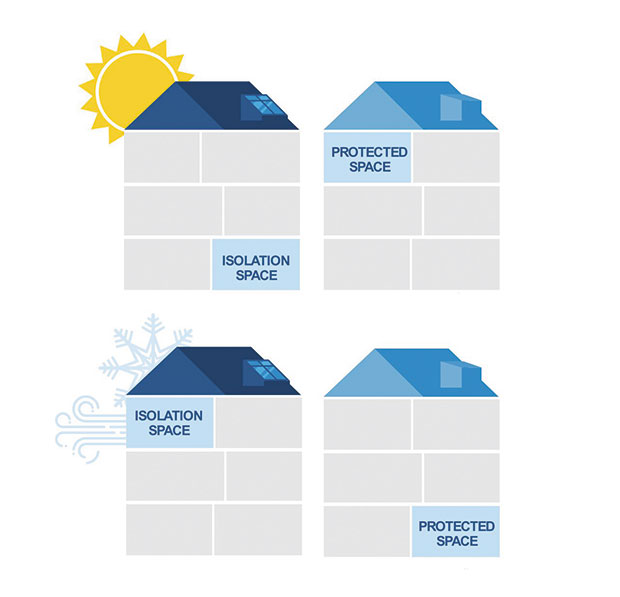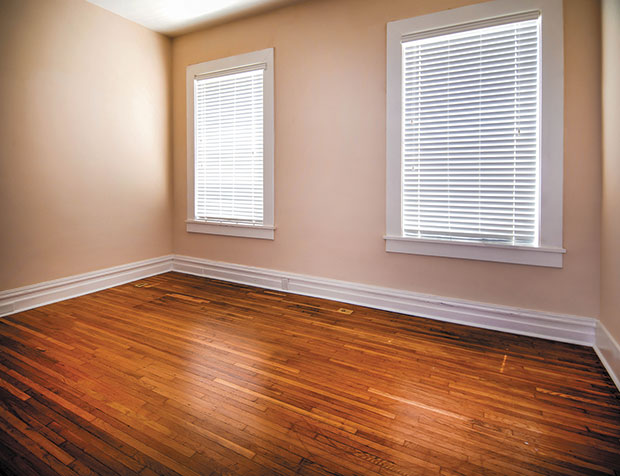Make your home a sanctuary
Winter has brought with it a resurgence in COVID-19 cases. And while the rollout of preventive vaccines has begun, the manufacture and delivery of sufficient doses to inoculate all Americans will take months. Because the disease can be unpredictable, everyone should take precautions to mitigate its spread, especially when it makes an appearance at home.
While the U.S. Centers for Disease Control and Prevention recommends physical distancing, mask-wearing and other health-related measures, the American Society of Heating, Refrigerating and Air-Conditioning Engineers also recommends additional guidance when a household member is known to be infected, to help reduce risk to other household members. Filtrete Brand, a leading air filtration brand of 3M, has also made some of this information available at filtrete.com.
First, prepare a clean sanctuary within your home, either an isolation space (for someone who has contracted COVID-19) or a protected space (for someone who may be at high risk of getting the coronavirus).
Location is especially important. When the weather is warmer, the ideal isolation space should be on a low floor; in cooler months, a high floor.
However, for protected spaces, the location should be just the opposite: on a high floor in warmer weather, and on a low floor in chilly weather. The reason for this is to prevent having air naturally gravitate toward protected spaces as a result of seasonal temperature differences.
Earmarking space is a good start. To further optimize the space for preventing the spread of infection, you can address these key elements as applicable to your home, understanding there is variation in home construction, HVAC systems, and climate:
• Windows: Keep windows closed as much as possible throughout the home. In an isolation space, use a window-installable product to provide exhaust ventilation. In a protected space, supply filtered, outdoor air.
• Doors: For an isolation or protected space, always keep the door closed. For added safety, install a draft stopper under the door or hang plastic sheets in front of the room’s entrance.
• Vents: If you have a forced-air heating, ventilation, and air conditioning (HVAC) system, seal all vents in the isolated or protected space. By doing so, you’ll prevent its air from entering other rooms. However, if the room you select has the home’s only HVAC return vent, it may be wisest to choose another room.
• Portable heating/cooling: If you’re able to seal off all vents, you may require a portable room heater or air conditioner so that thermal conditions can remain comfortable.
• Private bathroom: If possible, designate a private bathroom for use only by the occupant of the separate room. For a protected space, only run the bathroom exhaust fan when the facilities are in use. For an isolated space, run the bathroom exhaust fan continuously at high speed.
• Air purification: A system such as the Filtrete Air Purifier with HEPA filtration can help capture unwanted air particles, including viruses and bacteria, in a protected space.
Be sure to change the filter regularly, per instructions or according to the device’s electronic filter life indicator. While Filtrete Air Purifier Filters don’t stop or prevent the transmission of COVID-19, they do improve indoor air quality.
For more information on preparing a clean sanctuary at home, visit filtrete.com.
To stay up to date, consult the CDC and other health authorities, as well as ASHRAE for the latest guidelines, updates and recommended precautions around COVID-19.
This article is courtesy of StatePoint Media.

